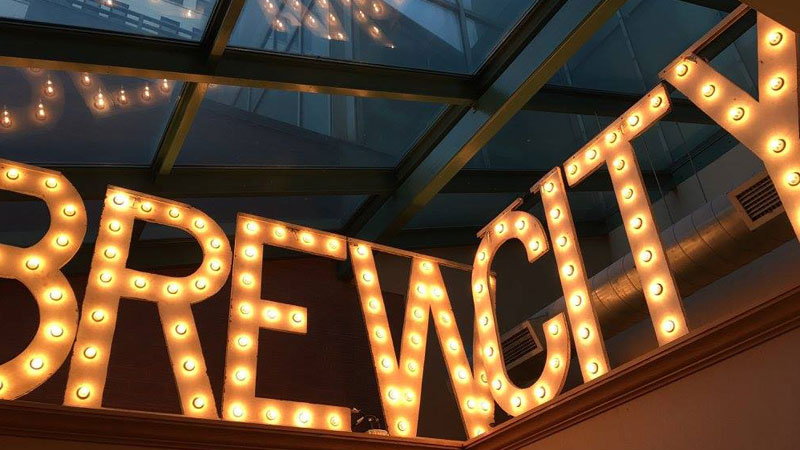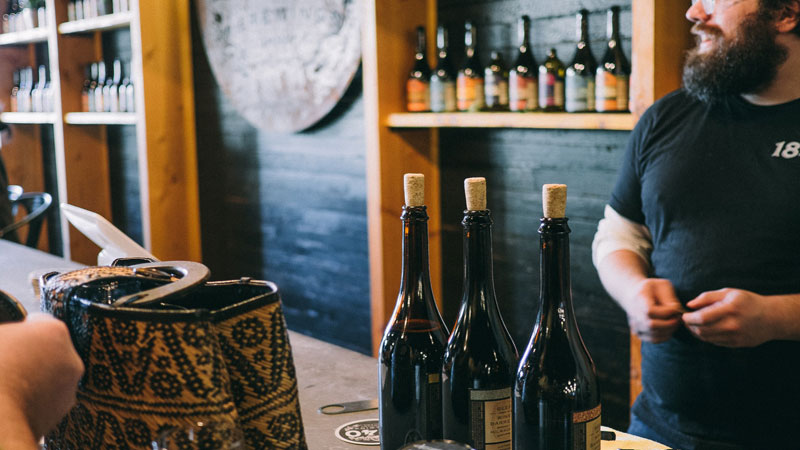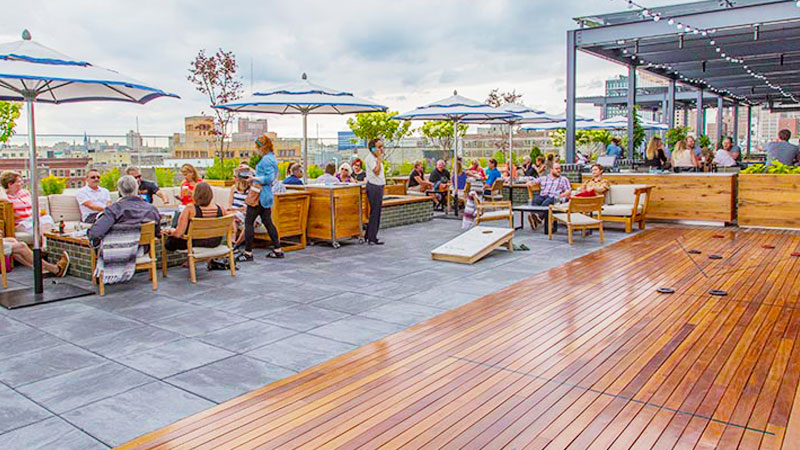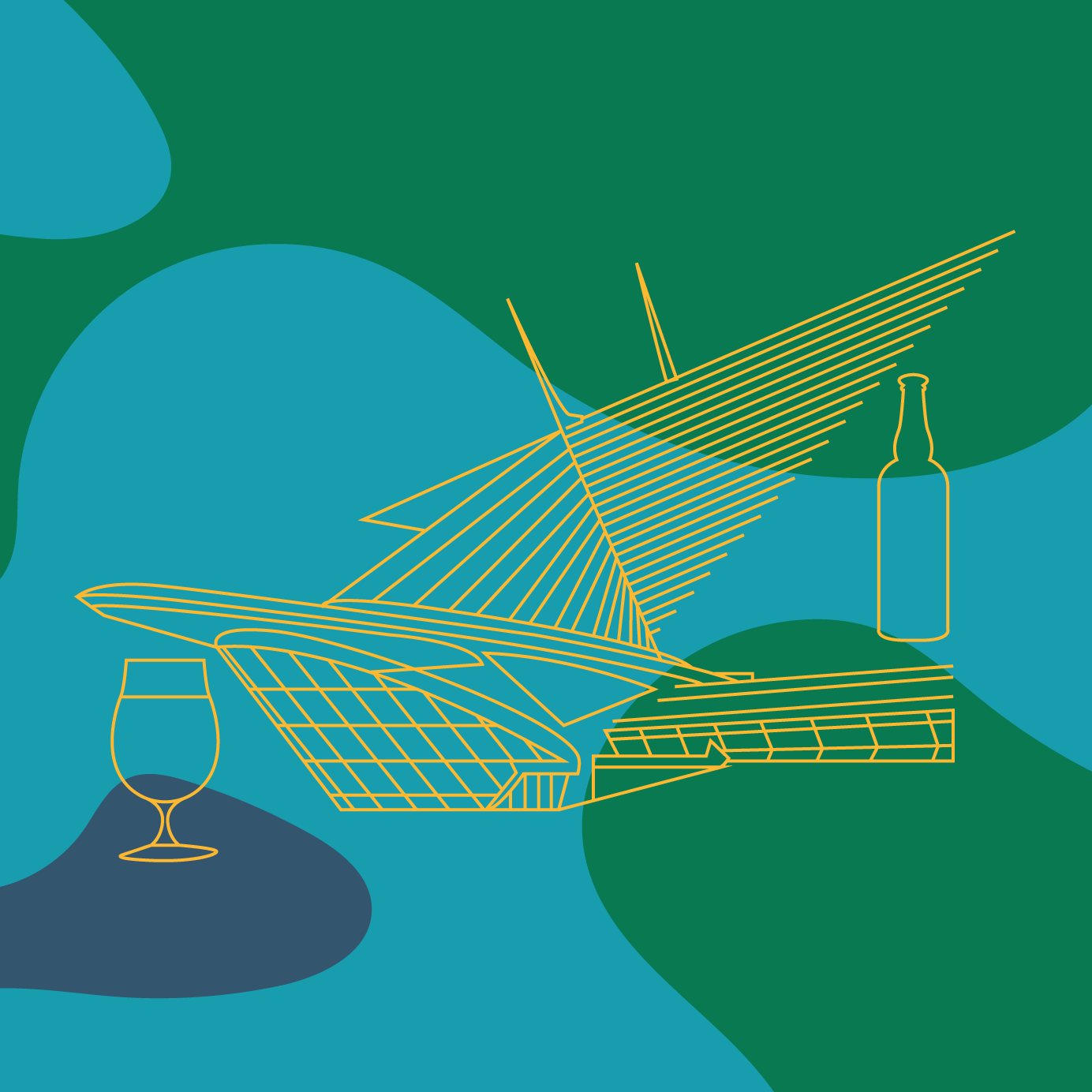If you visit Milwaukee, be prepared to talk about beer. A lot.
Nicknamed “Brew City,” and located 80 miles north of Chicago, Milwaukee has had hops running through its veins for longer than some cities have existed. If you’ve ever sipped a PBR, High Life, Schlitz, or any number of other popular domestic beers that evoke dorm parties and first apartments, you’ve tasted a piece of the city’s history.
Like many American cities, particularly those with industrial legacies, Milwaukee is now undergoing a craft brewing renaissance. Given locals’ deep connections to beer, however, they are not novelty-seeking, participation-trophy-awarding drinkers. Milwaukee’s new-wave brewing scene is different because in this city, beer isn’t a trend but a way of life.
One local who was eager to talk about her quintessential hometown beverage tells me that it’s rare to attend any event, from a child’s birthday party to a charity auction, that doesn’t feature beer in some way, and to neglect it immediately raises eyebrows.
Upon my own arrival in Milwaukee, beer seems to be on everyone’s minds.
“You know, we have a beer garden on the roof with a bunch of local beers,” the valet at the Journeyman, a hotel in the city’s Historic Third Ward, says. He happily assures me that I have until midnight to sample the city’s offerings. At check-in, the hotel concierge asks, “So, do you guys like beer?”
This must be the place.

Milwaukee’s long love affair with the beverage dates back to the German immigrants who settled here in the 1800s. Bringing with them a love of lagers, beer gardens, and a meat-and-carb-heavy diet, the area’s new inhabitants quickly began brewing beverages that would provide a taste of home. For more than a century, little changed. But over the last few years, Milwaukee has been experiencing a craft-beer boom that’s dramatic even in comparison to cities like New York and Seattle.
“Beer began here as craft, became a major industry, and now it’s come full circle back to where it began,” Mame McCully, executive director of the Milwaukee County Historical Society, which runs the Brew City MKE Beer Museum, says. She explains that the only way to tell the whole history of the city is through beer; entire industries sprang up around brewing, from bottling to refrigeration to storage to shipping.
Brew City delves deep into Milwaukee’s story, from the consolidation of smaller breweries into powerhouses like Miller-Coors, Pabst, and Schlitz; through the trials of Prohibition, which led to some questionable products like Pabst’s “medicinal” malt extract; and ending, of course, in a tap room.
The draft list at Brew City features only Milwaukee beers and is organized by neighborhood. “Because that’s how you drink, isn’t it?” McCully asks. “You drink in your neighborhood.”
Just a few years ago, Milwaukeeans didn’t have that opportunity. In the aftermath of Prohibition, no new breweries were licensed in the city until 1985.
Sprecher, a German-influenced brewery that makes both beer and soda, opened in 1985 and is still one of the city’s most beloved institutions. Randy Sprecher, its founder, had worked for Pabst before deciding to open his own brewery using what he’d learned from both his professional experience as well as homebrewing. Sprecher’s continued success was an indication of what was to come for Milwaukee’s craft- beer scene: a genuine love of the city’s beer heritage, pushed forward with a little bit of innovation.

Company Brewing opened in 2015 and was one of the city’s first new craft breweries. Brewer Sam Willis started as a server and then moved up to bartender, brewer’s assistant, and, finally, brewer. She is one of few women in the Milwaukee beer world.
Willis says that when she first began seriously considering making brewing her career, there was only a handful of options available. As a homebrewer, she approached the details of beer-making with the same academic interest she had previously applied to art history.
She recalls having hour-long conversations with the men who ran Milwaukee’s few breweries at the time. They would chat about everything from the technicalities of different hops to her philosophy on beer itself. But even after offering to do the grunt work — brewing, she says, is 90 percent cleaning — she was passed over every time in favor of male candidates. Finally, Company Brewing’s founder, a friend from a previous job, agreed to let her be a part of his new venture.
Now surrounded by the imposing metal kettles and steel mesh platforms of Company’s humid workspace, she takes a sip of a sunny golden session wheat that she helped brew and smiles.
“I’ve been brewing beer full-time now for two years,” she says. “And I still spend most of my time cleaning.”
Since moving up in the ranks at Company, Willis has watched the city’s craft-beer scene explode around her.
“It’s really amazing how the beer culture started out here as a bunch of imports. All we’d known for so long was craft beer from other places and then domestics from Milwaukee,” Willis says. “The new craft scene here is so exciting because we no longer have to rely on beers from all those different places. We get to be proud of these beers being brewed right here in town.”
Dozens of smaller breweries have opened up in recent years, but they can vanish just as quickly. Having been raised as much on beer as on mother’s milk, Willis says, has given Milwaukeeans a keen tongue for what’s good, and what’s just cashing in on a trend: If your beer doesn’t live up to expectations, then it’s going to fade away.

Even places that don’t brew their own beer are eager to take part. Joe Adamczak is the manager of the Outsider, the rooftop beer garden so enthusiastically recommended by our valet. Adamczak tells me it is extremely important to provide local options.
“We feature Milwaukee beers because we have such a robust drinking history and we’re home to many great breweries,” Adamczak says. “It celebrates our city’s roots and gives people a taste of the best of what the city has to offer.”
Yet even as the number of breweries ebbs and flows (roughly 25 at last count), Milwaukee’s beer community remains open and supportive. Willis serves on a local beer council with many of the same men whom she dealt with years ago.
“The best part of the beer culture here is how kind everyone is,” McCully says. “It’s more about the craft than the competition.”
Willis hopes that the continued interest in beer will open up opportunities for more diversity in the scene, which is still dominated by white men.
“I’d love to see women and other minorities in all aspects of beer,” Willis says. “ I want to see women scientists checking the yeast count, the bacteria count. I want to see beer celebrating all roles for all people, and I really believe that’s where we’re heading.”
At the Outsider, I sit at a long table meant to evoke the camaraderie of the city’s original beer gardens, and trace the sprawl of the city as it follows along the eponymous river. Below, there are birthdays and wakes, meet-cutes and breakups, all happening with a beer in hand.
“When you’re here, don’t overlook going somewhere in your neighborhood and sitting at the bar, hearing stories,” McCully says. “That’s how you become a part of Milwaukee.”
Your Brew City Travel Guide
Where to Stay
The Journeyman
The Brewhouse Inn & Suites
Where to Drink
Company Brewing
1840 Brewing
Lakefront Brewery
Third Space Brewing
